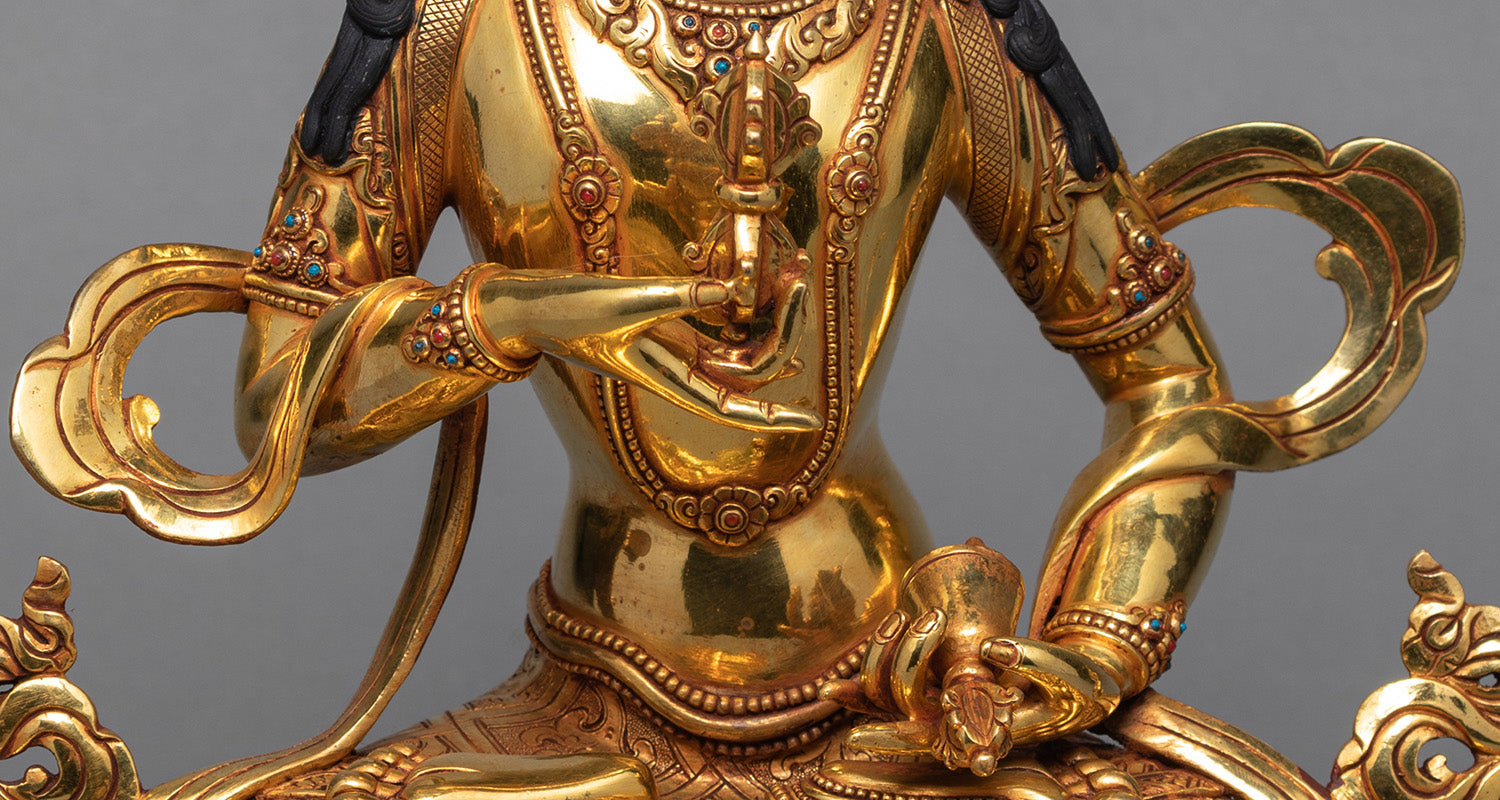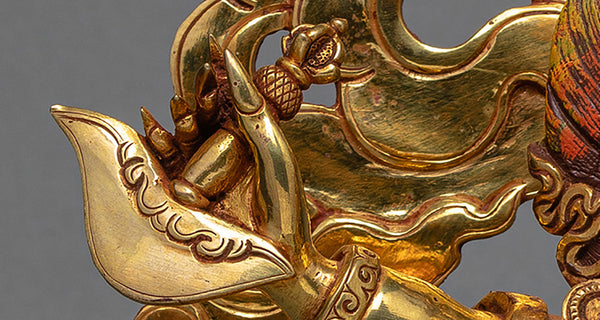Vajra and Bell of Vajrasattva:
The adamant scepter Vajra and bell (Ghanta) are the profound emblems of the Vajrayana.
In Tantric practice, Vajra refers to the adamant state of existence. It embodies which is eternal and unchanging, the truth of emptiness (Shunyata). It also signifies the adamant nature of a being that attains this realization.
When the Vajra is paired with the bell, the equation is a gendered one. Vajra represents the male component of Compassion (karuna), the skillful means or liberative activities (upaya kaushalya). Ghanta symbolizes the female complement, the wisdom (prajna). Wisdom is essential to true compassion and its appropriate expression.
Deities such as Vajrasattva displays such implements. Vajra is always held in the right hand. This is on the basis of a longstanding Indic association of the right side of the body with maleness.
Ghanta is held in the left hand (on the side associated with femaleness). He raises the Vajra and rests the Ghanta against his hip. This emphasizes the attainment of the adamant state as seen here:

Vajra as an emblem of the male organ is placed into the opening of the ghanta. It is a direct representation of the union of male and female.
Both encompass this gendered polarity within themselves. The two ends of Vajra represent Wisdom and Compassion. Similarly a Vajra-tipped handle of Ghanta replicates within itself the dual equation. There are many forms of vajras.
- One is the; vajrakila, or vajrakumara.
- The other two types are the five-pronged and nine-pronged forms.
The five prongs represent the five Jina Buddha and the five transcendental insights. The four pronged surrounding a central axis represents the five fold Jina mandala. It centers the Vairochana.
The nine-pronged vajra represents the Jina Buddha mandala and the four female Buddha- Prajna. Both ends of the vajra are identical.

One end is the phenomenal-realm mandala, while the other is the noumenal. There is a balance or opposition between the two mandalas, and one can understand the generation aspect of both mandalas in the symbolism of the four or eight in the blades, as they emerge from mouths of the Makaras.
The generation begins with the disturbance in Shunyata. It is represented by the exact center of the middle of the vajra-handle. It then radiates out through the mouth of the makara into the most turbid possible state of samsara. The rough lower sections of the blade represents this state. But, the blades smooth and taper, as they reach the fifth or ninth central prong. The turbidity calms completely and returns back into the realm of Shunyata.
Thus, the return is identical to the completion stage of transformative meditation process. Here, the phenomenal and the noumenal states collide back to Shunyata in the center.
The bell bears the face of Prajnaparamita, wearing the crown of the five Victor Buddhas. Their head emerges from an overflowing vase of plenty (purnaghata), which rests on the shaft of the bell. Above her head is a vajra, the male aspect, while the actual bell portion is the female aspect.During specific ceremonies, the practitioner will insert the male vajra into the opening of the bell to signify the union of the male and female in non duality.
Tantric Buddhist call their distinctive realm of practice Vajrayana, the Adamantine Path. The vajra and vajra-handled bell are the profound symbols, and ritual implements. They are the constant reminders of the metaphysical verities, the highest aspiration of this tradition.
Source: The Circle of Bliss





